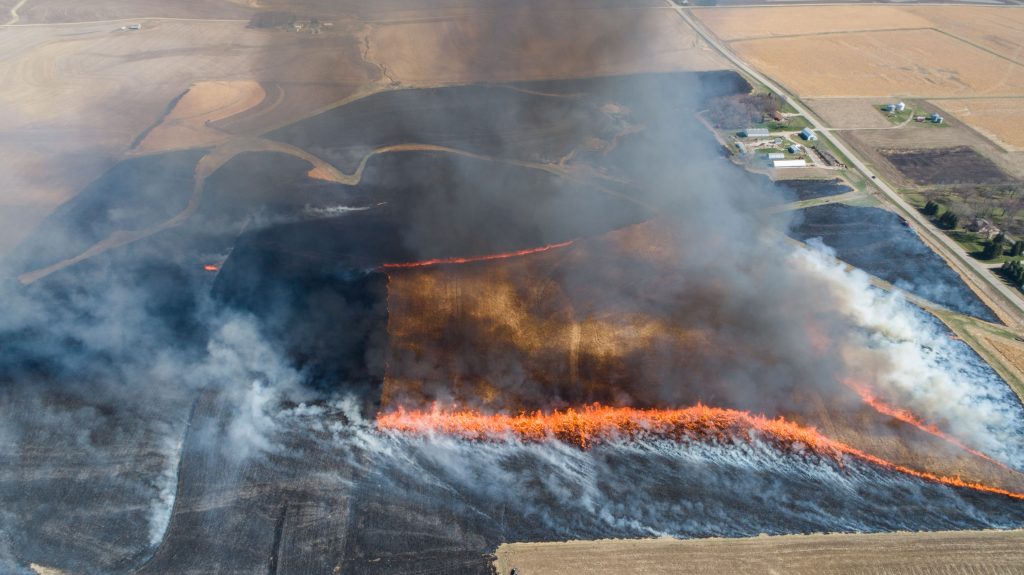How Will Canadian Wildfires Impact Crop Production
By: Jane Marsh
The stifling orange haze has become a familiar sight across Canada this summer. With wildfires ravaging the country since May, agriculture is taking a hit, and the effects are rippling downstream. Here is how the fires are impacting crop growth and distribution.
Reduced Sunlight Intensity
As cloud cover can suppress plant growth, so can thick smoke that chokes out the sun.
Many plants depend on strong, direct sunlight for growth. One study of shading corn from solar radiation saw the dry matter of the vegetative and reproductive organs decrease by up to 25.5% at maturity in shaded plants.
Blocking out the sun reduced the size of the plant’s roots in the same experiment, and this process could lead to erosion over time as the roots start to die. Shading also makes corn stalks more susceptible to disease. During prolonged periods of low sunlight, plants can fall victim to soil-borne pathogens that cause stalk rot or lodging.
Additionally, plants with C4 carbon fixation pathways — like corn and sorghum — need stronger direct sunlight than C3 plants, like spinach, wheat and cotton. Smoke or cloud cover can prevent them from growing even if they receive the required daylight hours.
Timing also matters when it comes to plant growth. Reduced sunlight during grain fill and sinking — corn’s initial reproductive period — has a more significant negative impact than reduced sunlight before these crucial processes occur.
Increased crop diversity could provide a solution to future issues with wildfires. Even without delving into intercropping, growing several hybrid varieties of the same species could bolster farms against low yields. Genetic variation makes some plants more resistant to darkness than others. It could also help plants grow in hotter conditions.
Increased Sunlight Diffusion
In addition to reflecting sunlight, wildfire smoke scatters it, a process called diffusion. This effect can benefit some plants by making their photosynthesis more efficient. Plants with multilayer canopies and taller, higher leaf area indices are more likely to benefit from diffusion than shorter crops.
The amount of smoke present also affects how much diffusion can help. Light smoke may benefit some plants, but it starts hindering photosynthesis when it gets thick enough to block sunlight. Reduced photosynthesis could decrease crop yields.
Higher Ozone Levels
Wildfires release toxins, including sulphur dioxide, nitrous oxide and methane, which are 28 times more potent at heating the atmosphere than carbon dioxide. Smoke also contains ozone that can burn or oxidize tissues in certain plants like potatoes, watermelons, cucumbers and beans. It can even make wine grapes taste like smoke.
Ozone enters plants through their stomata and oxidizes tissues during respiration. It causes more damage to plants than all other air pollutants combined, and it can reduce crop yields in both monocot and dicot species.
Ground-level ozone forms when nitrogen oxides and volatile organic compounds (VOCs) react in the atmosphere with sunlight. Wildfires release large amounts of VOCs, and wind can transport nitrogen oxides and organic carbons long distances before they combine to create ozone, which can linger in the air for weeks.
Other Wildfire-Related Problems
In addition to changes in crop growth, the Canadian wildfires have had many other effects along the agricultural supply chain. The most obvious issue has been wildfires directly burning fields and destroying summer crops.
Fires have also damaged harvesting equipment and electrical lines, causing greenhouse power outages and resulting in crop deaths. Smoke has driven pollinating insects away from farms and may lower fruit output. Highway closures have cut off routes to crop buyers, leading crops to wither where they stand or rot after harvest.
Some producers have had to leave their farms for safety reasons or due to government-mandated evacuations. In their absence, no one has been able to water or weed the crops,
causing the plants to die or reduce their yields.
Smoke is also making it too dangerous to work outside in some cases. Farmers have less time to perform routine activities like fertilizing, irrigating and planting.
Going Up in Smoke
The Canadian wildfires are razing crops by blocking sunlight, increasing ozone levels, forcing evacuations and destroying farming equipment. These combined issues will likely lead to a poor summer production season for Canada’s growers. They may also cause food prices to rise as farmers sell their surviving fruits and vegetables at a premium.
Jane Marsh is Editor-in-Chief of environment, co
jane@environment.co Subscribe to our newsletter!




